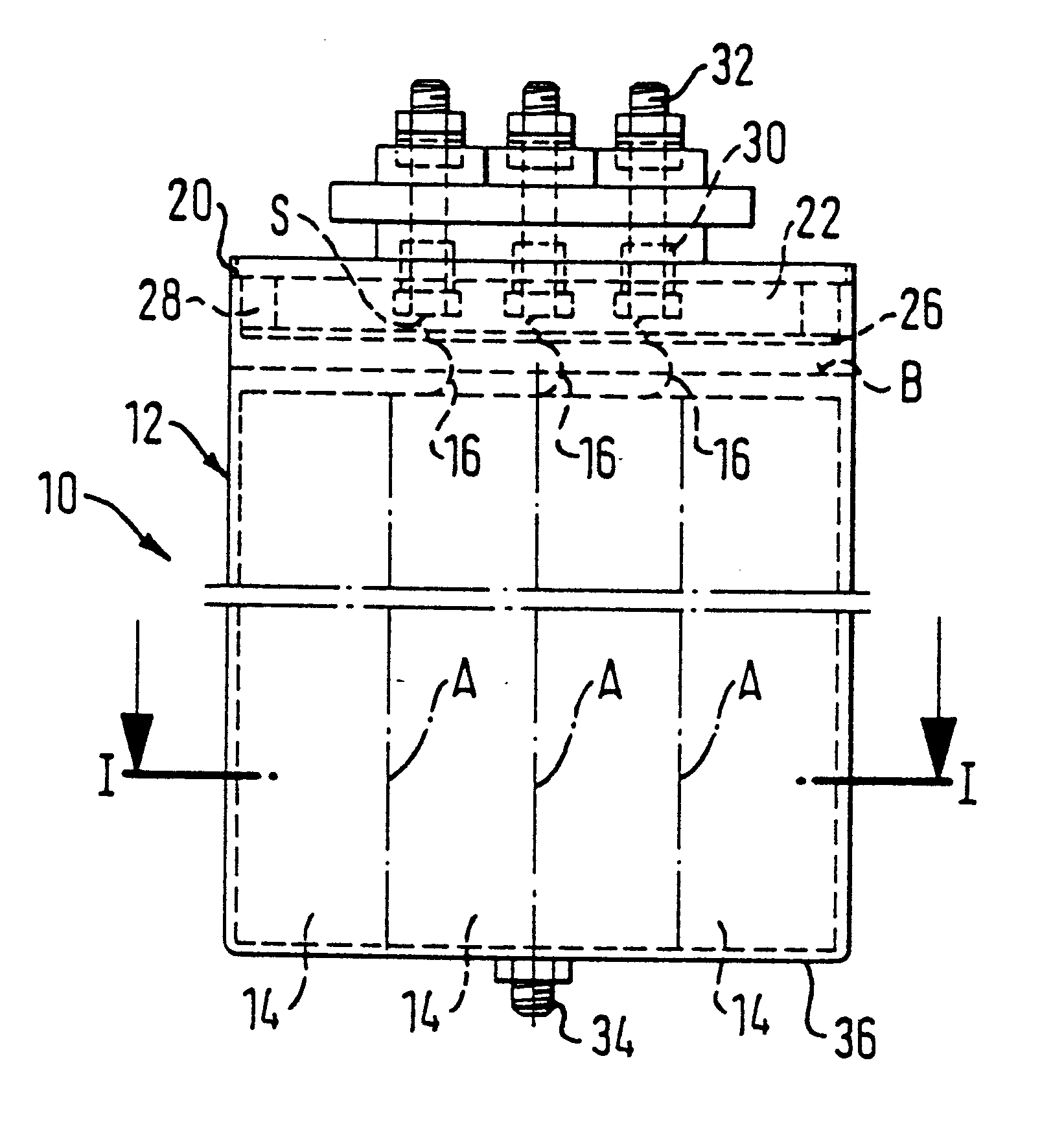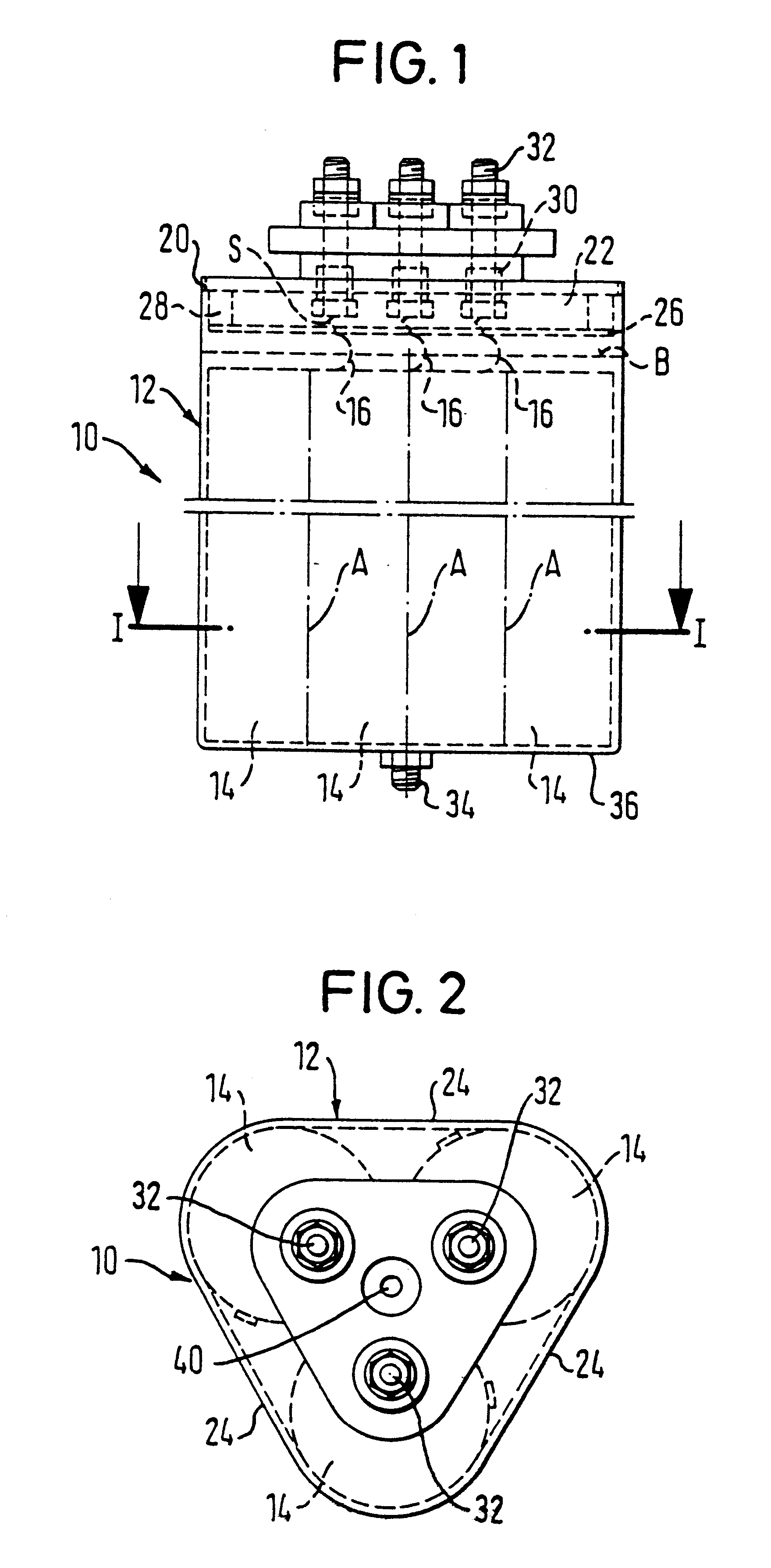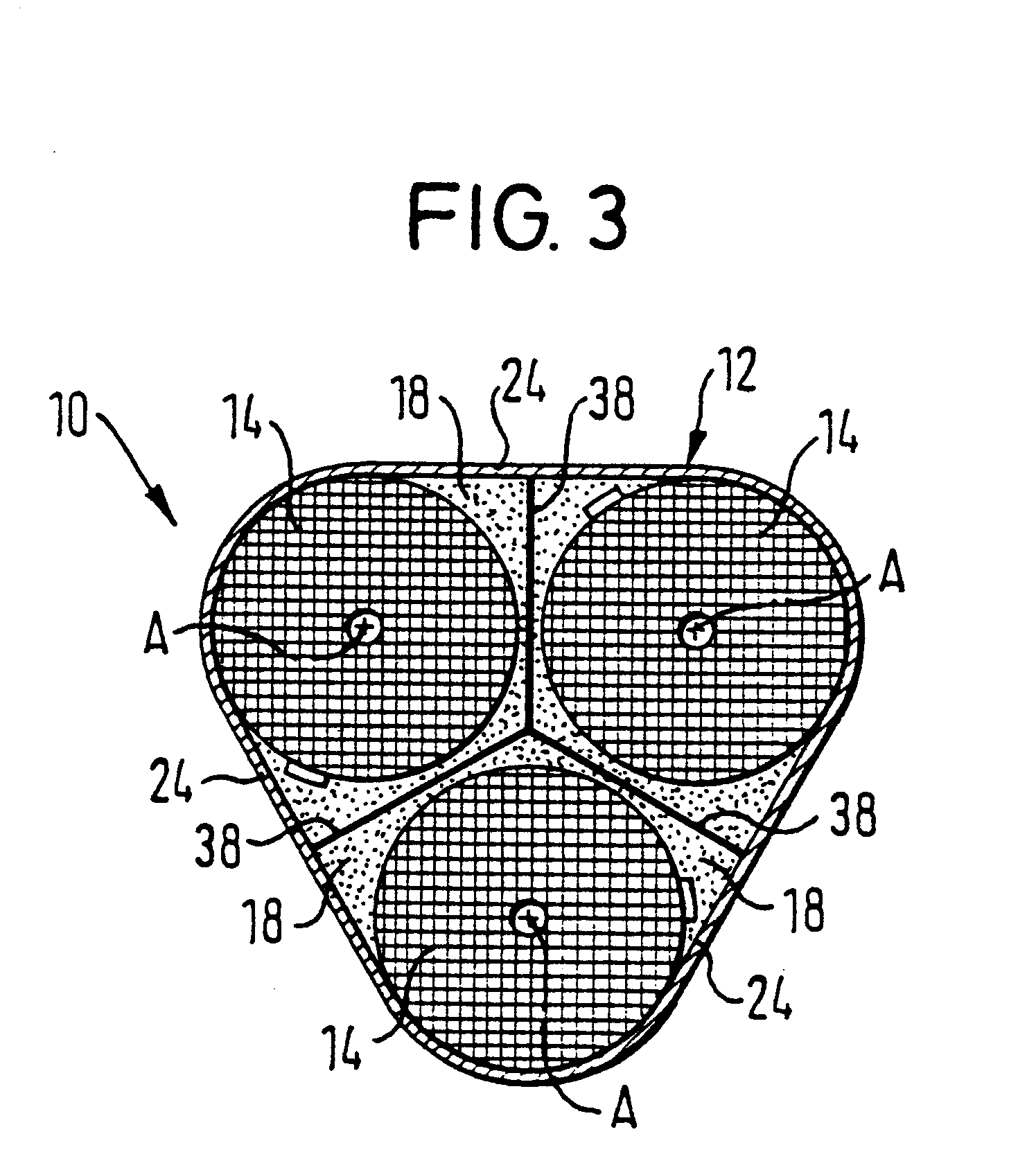Power capacitor
a technology of power capacitors and capacitors, applied in the direction of capacitors, basic electric elements, electric devices, etc., can solve the problems of small outer cooling surface of such capacitors, poor utilization of housing volume, and large space requirements of arrangement in which a plurality of such capacitors are arranged alongside one another
- Summary
- Abstract
- Description
- Claims
- Application Information
AI Technical Summary
Benefits of technology
Problems solved by technology
Method used
Image
Examples
Embodiment Construction
In FIGS. 1 to 3, an electrical power capacitor 10 having three round, wound elements 14 accommodated in a common housing 12 is shown in a purely schematic representation.
In this arrangement the three round, wound elements 14 are arranged in star-like manner alongside one another, with their axes parallel to one another. The housing 12 has in cross-section generally the shape of a triangle, the corners of which are rounded and have a radius of curvature corresponding at least substantially to the radius of the round, wound elements 14.
In the present case, the three wound elements 14 have the same diameter, so that the housing 12 generally has the shape of an equilateral triangle in cross-section.
The housing, which preferably consists of flow-pressed aluminum, is formed as a closed housing 12. It can be filled at least partly with potting material, oil and / or gas. In FIG. 1 the level for the potting material or for the oil filling is designated by B.
In the present case a filling of po...
PUM
 Login to View More
Login to View More Abstract
Description
Claims
Application Information
 Login to View More
Login to View More - R&D
- Intellectual Property
- Life Sciences
- Materials
- Tech Scout
- Unparalleled Data Quality
- Higher Quality Content
- 60% Fewer Hallucinations
Browse by: Latest US Patents, China's latest patents, Technical Efficacy Thesaurus, Application Domain, Technology Topic, Popular Technical Reports.
© 2025 PatSnap. All rights reserved.Legal|Privacy policy|Modern Slavery Act Transparency Statement|Sitemap|About US| Contact US: help@patsnap.com



